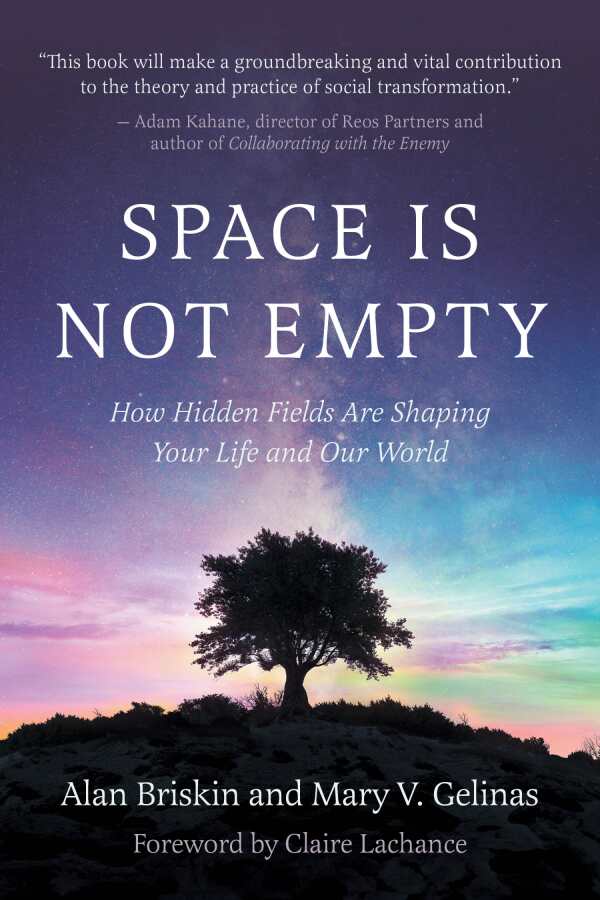Space Is Not Empty
How Hidden Fields Are Shaping Your Life and Our World
Exploring unseen fields with aplomb, Space Is Not Empty is a spiritual self-help text about leading a more present, thoughtful, and positive social life.
The invisible worlds of social fields and behavioral energies are dissected in psychologist Alan Briskin’s and consultant Mary V. Gelinas’s fascinating New Age self-help text Space Is Not Empty.
Organized like a workable textbook about the unseen vibes among which human interactions take place, the book examines familiar social frameworks like interteam conflicts and interpersonal turmoil with refreshed clarity. It probes existential quandaries and works to better reveal the sometimes abstract notion of a “vibe” itself, which it treats as a misnomer for the personal (responsible for shaping one’s mood, intentions, and behavior), social (about the behaviors of others and groups) and noetic (about the cosmic, instinctual, and natural) fields that it claims surround people at each moment.
Both particular and speculative, the book references consulting challenges with myriad companies to explore the influence and seeming mystery of the three particular fields at its center. The chapters inspired by the noetic field, for example, are embellished by anecdotal examples from affected people, including NASA astronaut Edgar Mitchell, who said that his experience during Apollo 14’s return flight to Earth yielded a feeling of absolute oneness with the planet, the stars, and the universe at large. And in addressing social and personal fields, the book remains rife with supportive anecdotes from archived personal conversations. There are insights from field awareness practitioners and authors including Mary Key, the founder of Key Women’s Leadership Forums, that bring practical issues between and within people into focus, outlining subtleties in awareness, personal experience, and past influences and showing how they impact the present. The impacts of empathy and the post-ego presence of mind are explored as well.
The book devotes much energy to outlining the social and professional benefits of recognizing and shifting one’s responses to the world. It includes recommendations for noticing and absorbing the flow state of the personal, social, or noetic fields, modeling a beneficial strategy for turning awareness into a way of life. Its reference points are ranging, too: They include expected names like Carl Jung and Albert Einstein, but also a former Cincinnati Reds owner, Marge Schott, and a nineteenth-century South Carolina senator, James Henry Hammond, who are both held up as examples of people who upset prevailing social fields with their racism and bigotry. Abstract at times, its work is piquing, evoking the solace-seeking of exercises like meditation, breathwork, and centering.
Space Is Not Empty is a spiritual self-help text about exorcising negative energies, unseen barriers, and temporary impediments in order to lead a more present, thoughtful, and positive social life.
Reviewed by
Ryan Prado
Disclosure: This article is not an endorsement, but a review. The publisher of this book provided free copies of the book and paid a small fee to have their book reviewed by a professional reviewer. Foreword Reviews and Clarion Reviews make no guarantee that the publisher will receive a positive review. Foreword Magazine, Inc. is disclosing this in accordance with the Federal Trade Commission’s 16 CFR, Part 255.

